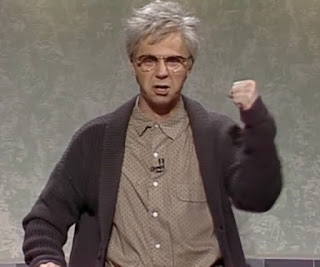 |
| In my day, we even didn't have armor. We tied dead raccoons to our bodies to protect us from orcish arrows and we loved it! |
I constantly hear a old school grognards bitching and moaning about how the game is “terrible” now that “all encounters are balanced”. They rail against CR (or EL) as a tool because somehow believe it puts training wheels on the game.
I call bullshit.
First, CR is a tool, like any other, at the disposal of the Dungeon Master so that they might know how difficult a group of opponents may be to a party of of a particular level. Does this mean all encounters must be matched with the level of the party?
Of course not. It’s a canard to suggest otherwise, to put it nicely. Or to put it less nicely, “Bullshit.”
Roots of the Game
 |
| It's right there in the DMG! |
Hit Dice - This is the most obvious balance mechanic present in all the old editions. Monster didn’t just have “hit points”... they had Hit Dice, a measure of relative power. Higher Hit Dice creatures had better saves, or weren’t as easily turned. It was the monster equivalent of the PCs “level”.
Dungeon Levels - Gygax’s own games and the written guidelines in the AD&D Dungeon Master’s Guide illustrate that the dungeon level wasn’t just how far underground you were. It also represented how difficult the encounters would be. In Gygax’s view, the dungeons were intended to get more dangerous the further you went down. Easier monsters were on the first few levels of the dungeon, but as you delved deeper, difficulty progressed at a relatively predictable pace. If you look at charts on pages 174 - 179 of the AD&D Dungeon Master’s Guide, you’ll see that he wrote that encounter balance mechanism directly into the game rules.
 |
| Just what is that lizard dude anyway? |
Adventure Modules - For Pete's sake, right on the cover it reads “For Levels 1 - 3” or whatever. Every module in the TSR days were written and balanced with a specific level range in mind. Now, that didn’t mean there might not be an encounter or two that weren’t above the typical party’s capabilities, and that still remains true today. However, for a given adventure, the majority of the encounters were within the recommended party level range with only a few (if any) outliers.
 |
| Watch out for the guard frogs! |
On social media, one often sees old schoolers write, “The game world wasn’t balanced for the PC’s level…”
Yeah, it actually was. It has been that way from the beginning, even in the earliest rules, accessories, and adventure modules. So STFU.
Final Thoughts
I’m so sick of old school players claiming D&D 5th Edition is somehow “D&D with training wheels” just because it has a default play style that is slightly different from what they prefer. Get over yourself. Your version isn’t better. It’s just different (and only mildly). I’ve been playing this game for over 40 years now and every edition is fun (well… except maybe 3.x… JK!)
The Challenge Rating is a tool. It helps DMs design adventures that won't outright kill their PCs. It isn’t a rule that read “All encounters must be easily defeated.” That is a complete straw man. It is merely a measure of potential deadliness for those DMs that wish to gauge their adventure design… and these same balance mechanisms have been around since the earliest iterations of D&D, but “old school” grognards conveniently forget these existed.
FFS, just play the game and stop trying to piss on someone else’s fun.
Postscript -- I apologize if my recent posts have been more ranty than usual, but gamers on the interwebs just keep getting up my skin with their false assertions and straw men.


No comments:
Post a Comment